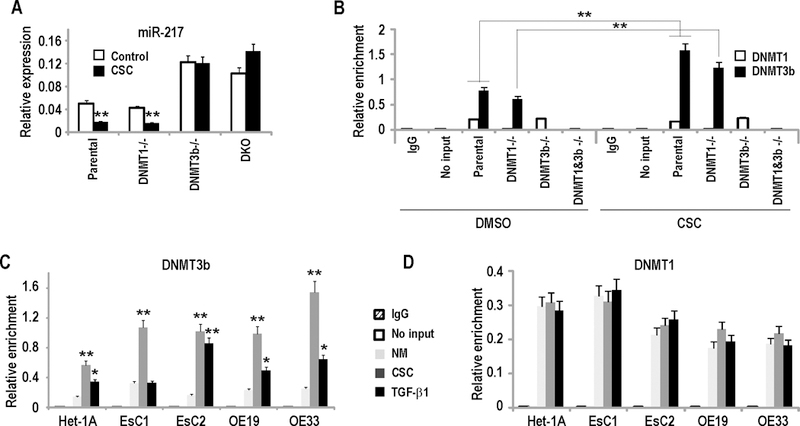Figure 9:

DNMT3b mediates CSC-induced repression of miR-217. (*p<0.05; **p<0.01)
A: qRT-PCR analysis of mir-217 expression in parental HCT116, DNMT1−/−, DNMT3b−/− and DKO cells cultured in the presence or absence of CSC. Loss of DNMT3b increased endogenous miR-217 levels, and abolished CSC-mediated repression of miR-217.
B: Quantitative ChIP analysis of DNMT1 and DNMT3B occupancy in the CpG island near miR-217 in parental HCT116, DNMT1−/−, DNMT3b−/−, and DKO cells cultured with or without CSC. CSC induced recruitment of DNMT3B, but not DNMT1 to this CpG island.
C/D: Quantitative ChIP analysis of DNMT3b (C) or DNMT1 (D) occupancy within the CpG island near the miR-217 genomic locus in Het-1A, EsC1, EsC2, OE19, and OE33 cells. CSC as well as recombinant TGF-β1 specifically induced recruitment of DNMT3B, but not DNMT1 to this CpG island.
